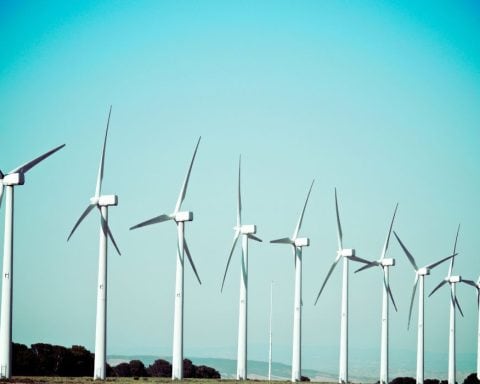With Canada’s home retrofit industry in chaos, consumers abandoning ship, and emissions in housing still falling far too slowly, two separate sign-on letters are urging Energy and Natural Resources Minister Jonathan Wilkinson to restore funding for the popular Canada Greener Homes grant program, The Energy Mix has learned.
The letters were both due for release Tuesday at 9 AM local time.
Cancelling the program “would set us back years in achieving our [greenhouse gas] emissions reduction goals, and denies the majority of Canadian homeowners the supports they need to create energy-efficient and climate-ready homes,” Green Communities Canada tells Wilkinson. “The forests are burning, and nearly all houses in the country need to be retrofitted. Now is not the time to slow down.”
“Discontinuing this program has created uncertainty in the HVAC and energy monitoring industries and an unsustainable boom-bust dynamic that will cause considerable chaos,” adds Environmental Defence Canada, in a missive to Wilkinson and Finance Minister Chrystia Freeland. “It has created uncertainty for businesses who have invested in this program and created almost 75,000 new jobs, while putting doubts into the minds of thousands of Canadians who have only recently considered switching to a heat pump.”
The federal decision “has also made things challenging for climate advocates who have put a lot of energy into promoting heat pumps and trying to educate Canadians about their merits,” Environmental Defence adds.
The two coordinated sign-ons are one of two major pieces of housing and climate policy advocacy landing in Ottawa today, along with a report from the Task Force for Housing and Climate that calls for construction of 5.8 million affordable, “net-zero-aligned” homes by 2030.
Too Successful to Continue
While the two letters emphasize different home retrofit strategies—Green Communities focuses on energy efficiency, Environmental Defence on heat pumps—they both decry the loss of a program so popular that it burned through seven years of funding in about 30 months, producing confusion for homeowners and chaos in the burgeoning home retrofit and energy advisor sectors when Wilkinson announced the cancellation in mid-February.
“I can’t recall another instance where the government ended a program because it was too successful and we had to ask them to renew it,” Environmental Defence Programs Director Keith Brooks told The Energy Mix.
“Oh, sure, the layoffs have started,” Kai Millyard, EnerGuide service organization manager at Green Communities Canada, told The Mix. “A lot of people had bookings to enrol in the program, but almost all of them cancelled because the incentive matters. It works. It makes a difference in enabling people to go ahead and do retrofitting.”
Millyard added that about 100 companies across the country were delivering retrofit and energy advisor services at the point when Natural Resources Canada announced the cancellation. “Ask NRCan six months from now how many there are,” he suggested.
The forests are burning, and nearly all houses in the country need to be retrofitted. Now is not the time to slow down.
- Green Communities Canada
After months of uncertainty, Wilkinson announced in early February that the government would close applications for the Greener Homes grant and wind down the program after existing applicants had moved through the system. Since it launched in December, 2020, NRCan said at the time, Greener Homes received more than a half-million applicants looking for home energy retrofit grants of up to C$5,000, plus $600 to help cover the cost of before-and-after energy audits.
With more than 165,000 grants already issued, and the rest of the audits and retrofits still in the queue, Greener Homes “has supported over 75,000 jobs in the retrofit economy, ranging from jobs in construction, made-in-Canada manufacturing, home energy auditing, sales, clean technology, and financial services,” the department said in a release. “The program has propelled a transformational and lasting shift in consumer preferences for more energy efficient homes and a robust made-in-Canada green buildings supply chain,” while saving an average of $386 and cutting 1.2 tonnes of carbon emissions per household per year.
But the uncertainty and anxiety around the program’s future prompted Stephen Farrell, owner of Calgary-based VerdaTech Energy Management and Consulting, to predict “massive fallout” and mass layoffs among energy auditors, many of whom had retrained or started new businesses on the expectation that the federal program would run at least seven years.
“We’ve just increased the number of energy advisers across Canada dramatically. Millions and millions and millions of dollars was spent training new energy advisors,” Farrell told CBC. “I would suggest we can lose about 70% of them. They’ll go out of the industry.”
A week later, Wilkinson confirmed to the Globe and Mail that a revamped program, aimed at addressing obstacles for low- and moderate-income households that were identified in the original design, would be one of the few new climate commitments in Freeland’s April 16 budget.
Get Everyone Onboard
In its letter to Wilkinson, Green Communities takes no issue with the new program design—as far as it goes. “Many of us have been advocating for a program that supplements the Canada Greener Homes Grant program to support lower-income Canadians who cannot afford to retrofit their houses on their own,” it states. “But such a program is needed as an addition to the flagship Canada Greener Homes Grant program, not instead of it. This would enable all Canadians to participate in the benefits of retrofits and contribute to meeting Canada’s greenhouse gas reduction targets.”
Wilkinson’s latest plan amounts to Ottawa “withdrawing from its commitment to meet its GHG targets in the residential sector,” the letter adds. “Since 2005, GHG emissions in the residential sector have proceeded at only one-tenth the rate required to meet Canada’s 2050 target, now only 26 years away.”
In addition to the direct benefits of the program, Millyard said Greener Homes has been an important tool for bringing home the government’s big-picture climate message.
“Many of these initiatives are an uphill battle each time,” he said. “This is the only program the government has that is engaging large numbers of Canadians in their own homes. When you do something about climate change, you feel good about it. You’ve made a contribution. You talk about it to your family members and neighbours and co-workers, and that supports climate solutions more generally.”
This is the only program the government has that is engaging large numbers of Canadians in their own homes.
- Kai Millyard, Green Communities Canada
While that dynamic is not the primary purpose of Greener Homes, “it’s a valuable reason to have a program like this. The government hasn’t done enough broad education, providing a vision of what a climate-safe future could look like, but this program is a vehicle to begin getting Canadians onboard. They don’t have anything else like it, and they really need it.”
The Environmental Defence letter calls for renewed funding for a universal program to avoid layoffs across the industry, interest-free loans and incentives to “tip the balance in favour of home heat pumps”, sufficient funding “well into the future”, and plans for an orderly wind-down once heat pumps have reached cost parity with fossil fuel alternatives.
“Due to the availability of this program and others like it, heat pumps are finally having their moment at a time when affordability is an issue and climate change is wreaking havoc across the country,” the letter says. “Any delay or disruption in this program is very damaging.”
Brooks said Environmental Defence supports energy efficiency, but has been focusing on heat pumps as part of its campaign against new gas installations in Ontario.
“If it’s time to change out HVAC equipment, it’s time to get a heat pump,” he said, and Greener Homes “has been increasing the attractiveness and affordability of heat pumps at a time when we have to get this transition done.”
Environmental Defence has been intervening on multiple levels to try to foil gas expansions, at a time when gas utility Enbridge “is desperately trying to sign up new customers,” he explained. “That means they’re going to have a gas furnace for at least 15 years. We’re in 2024, and if a new gas furnace gets installed in 2025, it means a new home is connected to fossil fuels until 2040. That’s an eventuality we want to avoid.”
Brooks added that Ottawa should not be “hobbling” the industry by offering an incentive, then removing it, then offering a different one. “I feel for everybody in that industry,” he said. “It creates a great deal of uncertainty, and I think it must be difficult to operate in such an environment.”
Find the Money
Millyard declined to estimate the odds of reversing Wilkinson’s decision in the weeks leading up to the federal budget. “It’s not necessarily about the budget that will appear in a few weeks,” he said. “The financial decisions may already be locked, for all I know. But they need to find some more money to continue this program somehow—that’s all. They’re obviously finding new money to support tar sands and hydrogen projects and whatnot, and this is not even necessarily as expensive as those things are.”
Asked how much energy retrofit work the government could have supported with the $3.8 billion it’s pouring into the latest cost overrun on the Trans Mountain pipeline expansion, he responded: “You can do the math. With the $2.6 billion they had (in Greener Homes), they’re reaching half a million households. This would be another half-million or more.”
Would that funding be enough to forestall layoffs in the industry? “Replenishing the program on a similar scale would obviously carry it a number of years forward again,” he said. But “we need to stop this boom-bust approach to programs,” possibly by capping the number of applicants each year so that funding lasts as long as it’s supposed to.
“We really hope the government does recapitalize this program and does establish a new program for low- and medium-income Canadians,” Brooks said. “What we want is for efficiency upgrades and heat pumps and low-carbon solutions to be the default, no matter what income bracket you’re in.”





